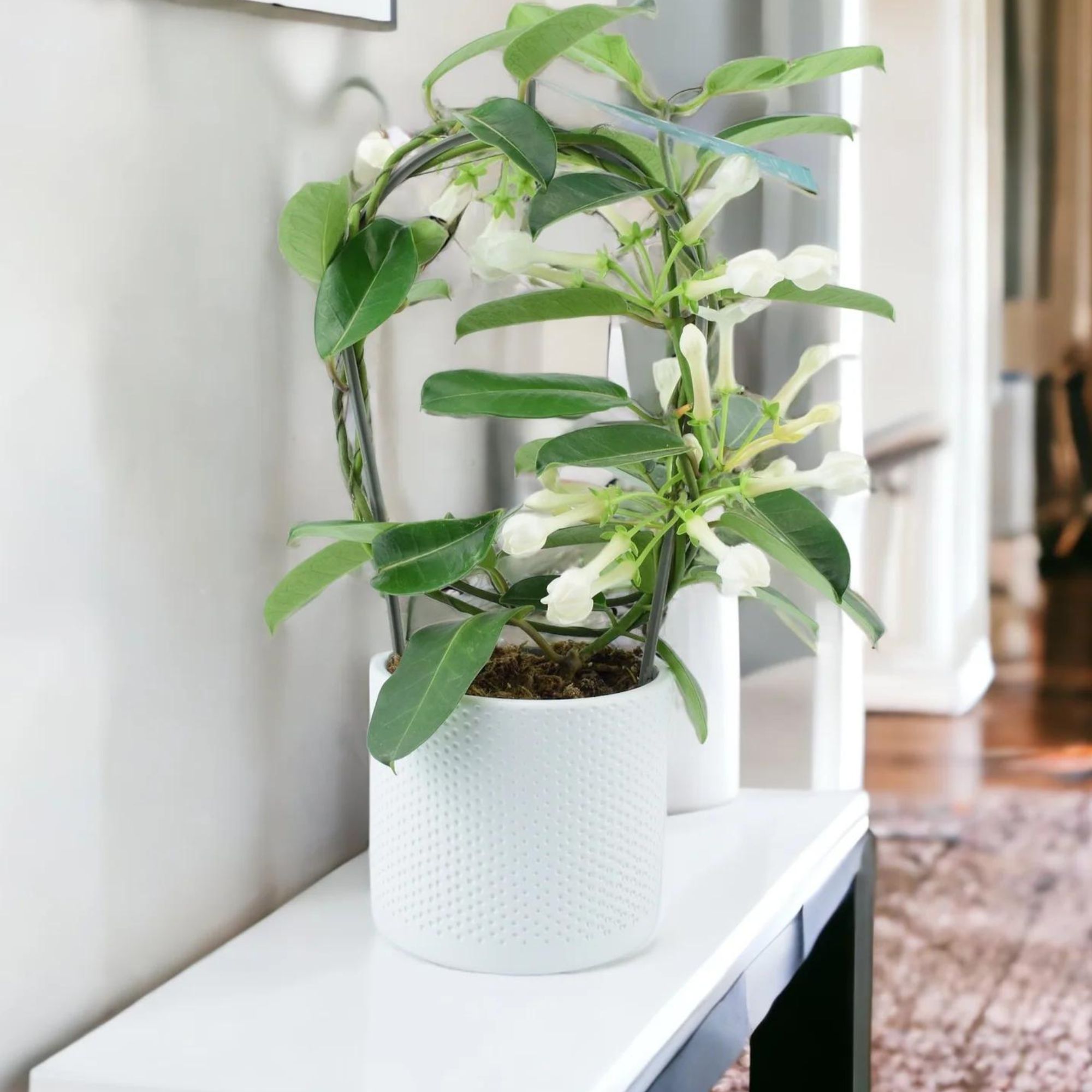How to care for Madagascar jasmine - the ultimate heavenly-scented houseplant
With captivating star-like blooms and a heavenly fragrance, this climbing beauty is a splendid addition to any room of the home
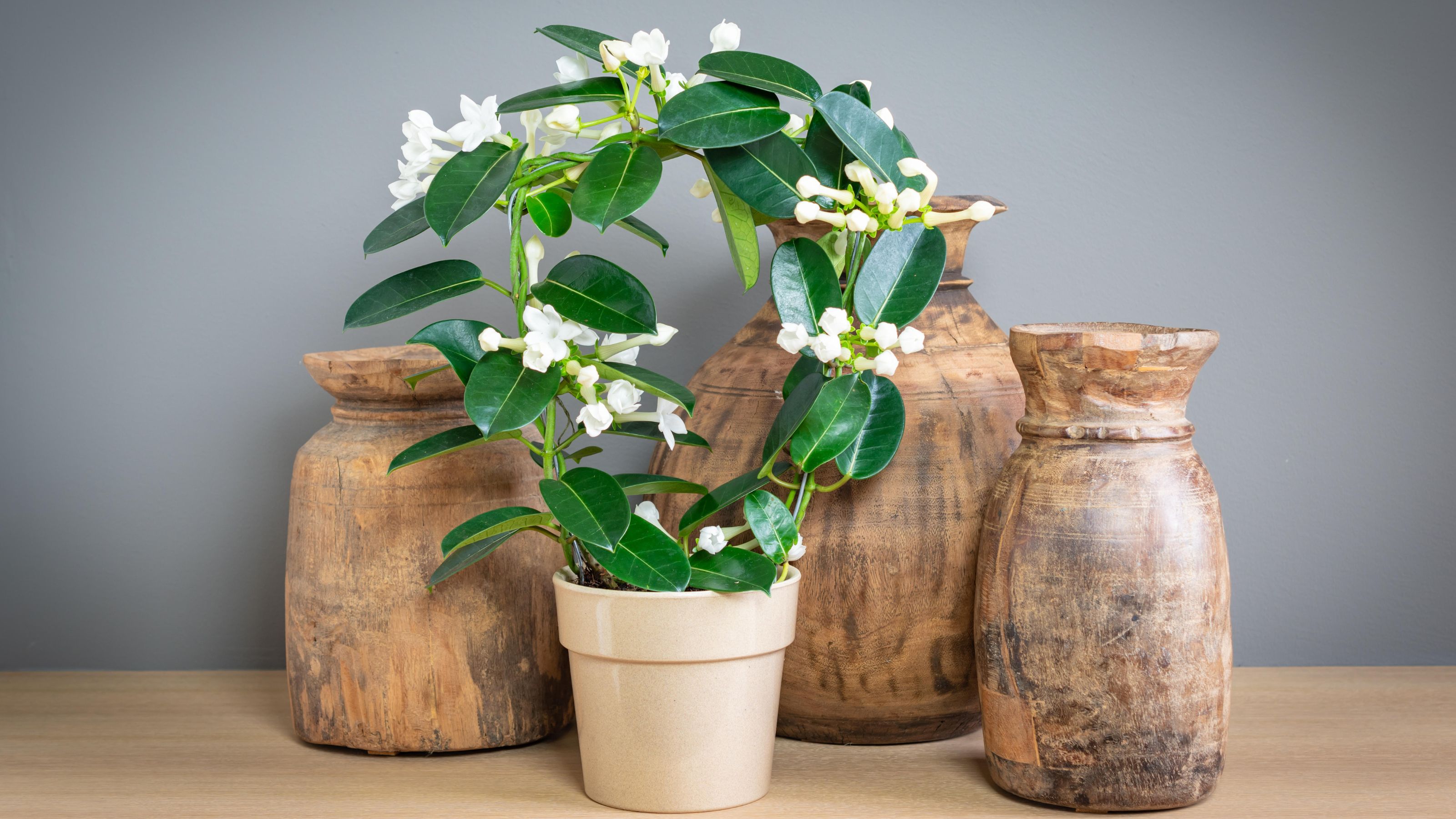
- What you will need
- Where to buy a Madagascar Jasmine
- How to take care of Madagascar Jasmine?
- How much light does a Madagascar Jasmine need?
- How do you water a Madagascar Jasmine?
- Do Madasgcar jasmines like humidity?
- Where should I put my indoor jasmine plant?
- How do you repot a Stephanotis plant?
- FAQs

Loved for its delicious fragrance and beautiful blooms, Madagascar jasmine is a beautiful houseplant and a valuable addition to any home. However, in order to prolong their perfumed flowers, you need to know how to care for Madagascar jasmine.
‘A staple houseplant idea, Madagascar jasmines are among the most fragrant of all flowers and will fill your home with a beautiful, natural aroma,’ says Emily Lawlor, owner of Happy Houseplants. ‘It’s a gorgeous plant that is an excellent eco-friendly alternative to even the best scented candles.’
How to care for Madagascar Jasmine
Who needs artificial air fresheners when you have a delightfully fragrant houseplant filling the air with its delicious perfume? Madagascar jasmine brings all this and more, from its tactile waxy leaves to its dainty blooms that are a popular addition to bridal bouquets.
Despite its name, Madagascar jasmine is not a ‘true’ jasmine and is instead part of the Apocynaceae family, which also includes periwinkles and oleander.
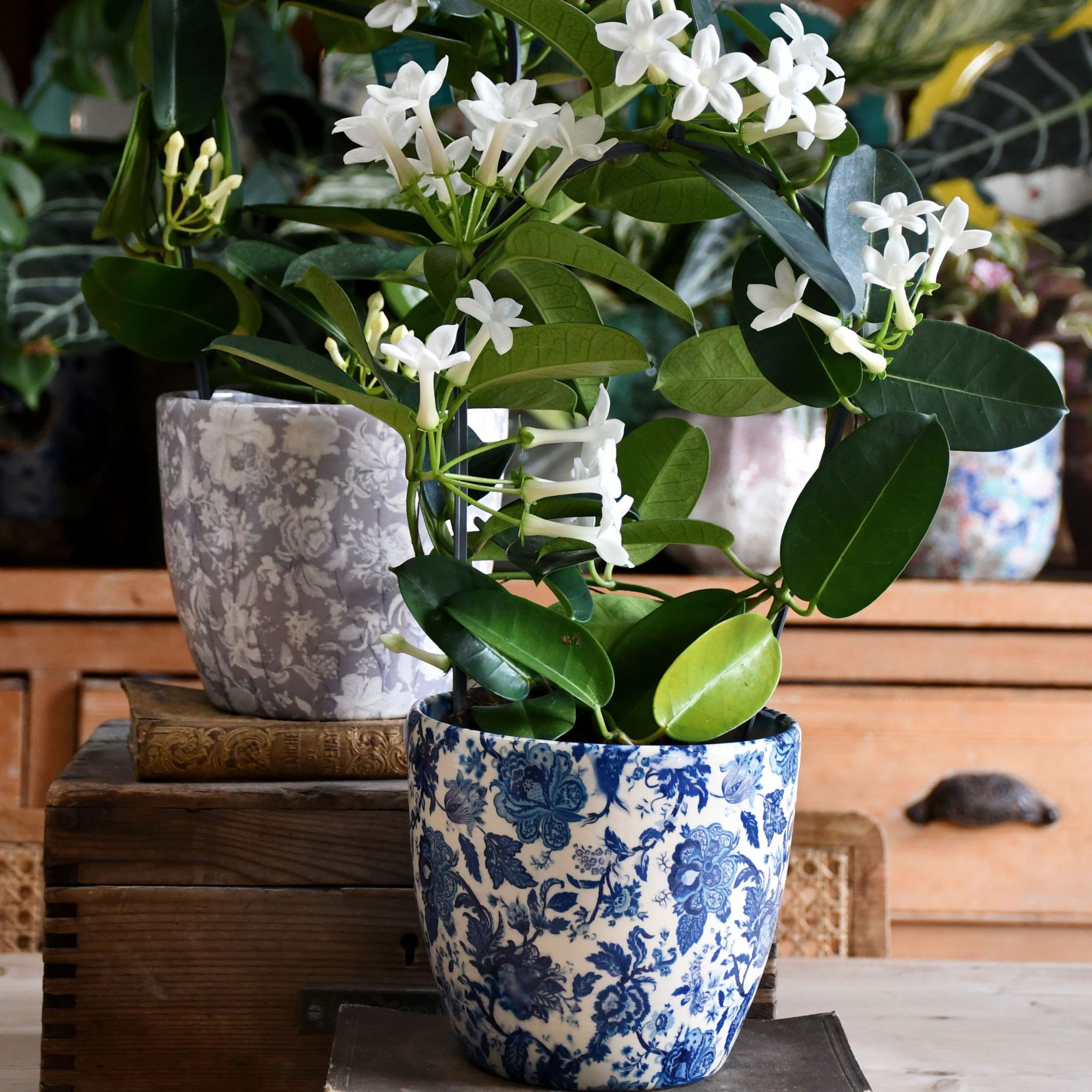
What you will need
- Madagascar Jasmine plant
- Plastic pot with drainage holes – one size larger than the size of the plant bought
- A liquid houseplant fertiliser, such as Baby Bio Houseplant Fertiliser on Amazon
- A small trowel, such as the compact Kent & Stowe Capability trowel on Amazon
- Houseplant compost, for example, Westland Houseplant Potting mix on Amazon
Where to buy a Madagascar Jasmine
While this year's hottest houseplant trend suggests that bigger is better, floral houseplants have a unique charm. When looking for a Madagascar jasmine, however, it is important to purchase from a reputable source.
Look for a plant that is already in bloom and not dropping flowers – this is a good marker that the plant is in good health. If you can't purchase your Madagascar jasmine in person, then consider one of the best online shops for buying houseplants.

Best for gifting
Beautifully packaged, the plant is shipped with a free handwritten gift card.
How to take care of Madagascar Jasmine?
Madagascar jasmine's beautiful blooms make for a great living room houseplant idea. However, it is important to correctly care for them to ensure they rebloom. If you want it to reflower, then creating the right environment is essential. ‘Encourage your plant to re-flower by keeping it in a light, warm, humid position. When caring for houseplants over winter, it is important to make sure that the temperature doesn’t drop below 13°C,’ says Angela Slater, gardening expert at Hayes Garden World.
Get the Ideal Home Newsletter
Sign up to our newsletter for style and decor inspiration, house makeovers, project advice and more.
Feeding is also essential. ‘Use a water-soluble fertilizer designed for indoor plants. Apply it during the growing season according to the instructions,’ adds Emily Lawlor, owner of Happy Houseplants. ‘Reduce or suspend feeding during winter months.’

Angela holds a degree in Conservation and Land Management and has had an active interest in gardening since the age of six. Angela was consistently outdoors from a young age, helping her father out in the garden who would grow his own vegetables. Ever since leaving home at age 18, Angela has always had houseplants, herbs and sprouting seeds on the windowsill. She now owns a smallholding where she grows a selection of vegetables and soft fruit.
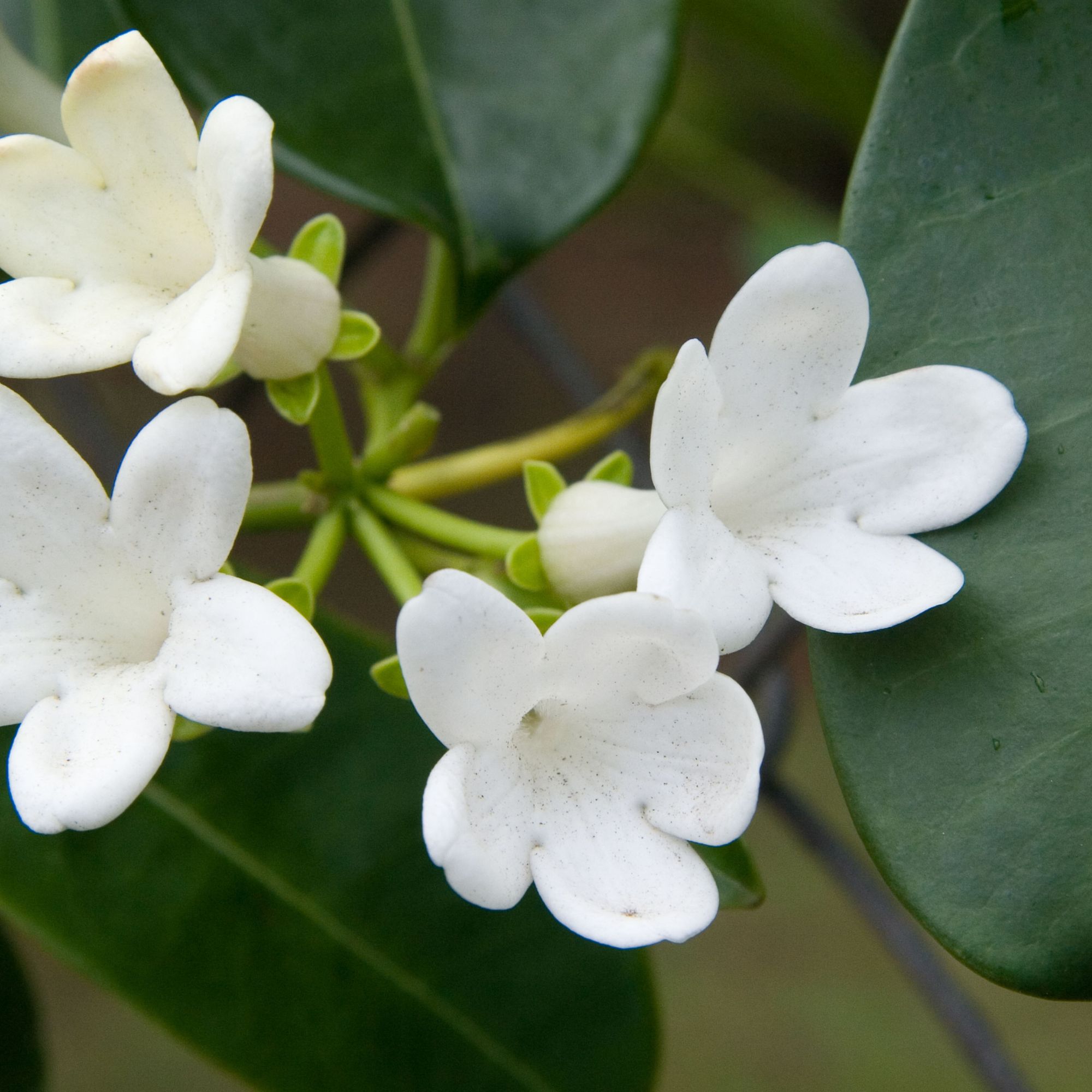
How much light does a Madagascar Jasmine need?
Like many of the best indoor plants, ‘Madagascar jasmine loves bright but indirect light, so thrives on a north or east-facing windowsill,’ explains Andy Little, houseplant buyer at British Garden Centres. ‘It is important to note that too much exposure to direct light will cause the waxy leaves to scorch.’
How do you water a Madagascar Jasmine?
Like polka dot begonias and snake plants, the best way to test whether your Madagascar jasmine needs to be watered is to test the moisture levels in the soil. This can be done with a moisture meter –a very handy tool – or simply by inserting a finger into the first few inches of soil. If it feels dry, it’s time to water. ‘To water plunge the pot into a bucket of tepid warm water and leave for a few minutes until the bubbles have stopped rising,’ says Angela Slater, gardening expert at Hayes Garden World.
‘Remove and leave to drain before returning the plant to its decorative pot cover. Reduce watering in winter, leave a longer period between each watering and just use a little water from a watering can.’
This method will reduce the risk of overwatering – however, if you find that your plant is a little on the damp side, then you'll be glad to know that there are ways to save an overwatered plant and encourage it to dry out.

Do Madasgcar jasmines like humidity?
Humidity is also essential for growth and flowering. The easiest way to do this is by standing pots on a saucer of pebbles and warm water – ensure that the base of the pot is not submerged as this can cause root rot.
‘Grouping several plants is also a great way to increase humidity as they create their own micro-climate,’ adds Angela Slater, gardening expert at Hayes Garden World. ‘Misting with tepid water every other day is also beneficial and will deter red spider mites which thrive in warm, dry conditions’.
Where should I put my indoor jasmine plant?
Madagascar jasmine or Stephanotis floribunda is, unsurprisingly, native to Madagascar. It is a popular garden plant in temperate parts of the US, but, in the UK it is mostly grown as a houseplant as it can’t survive the cold winters.
Consistent temperatures are essential to encourage flowering – 21°C is ideal.
‘A bright, warm and humid kitchen, conservatory or bathroom is ideal,’
says Elizabeth Marshall, seasonal buyer at Hillier Garden Centres.
‘Madagascar jasmine can flower anytime from spring to autumn, and once buds appear the plant must not be moved as even a subtle change in environment can cause the buds to drop,’ explains Natalie Bourn, shop manager of Between Two Thorns.
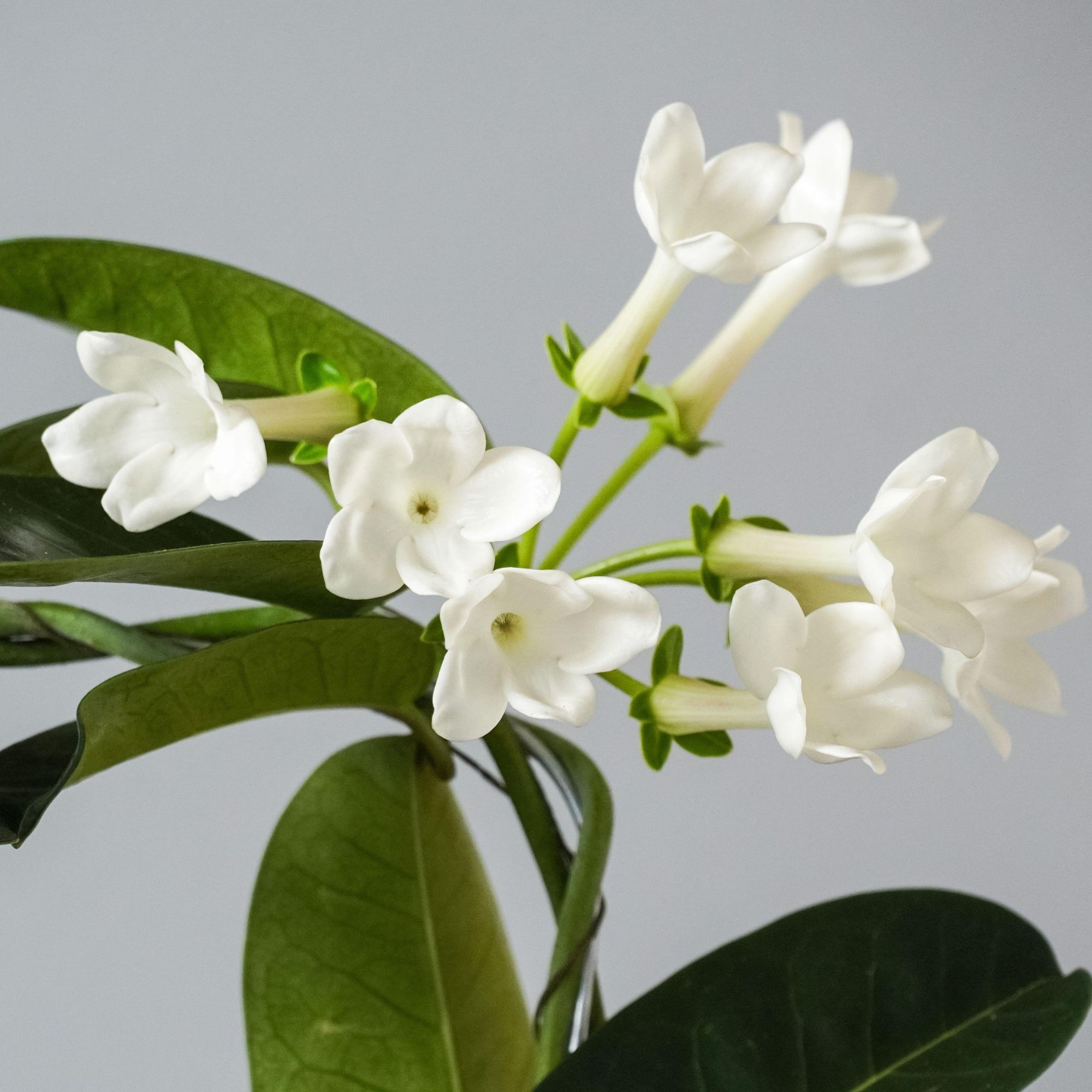
How do you repot a Stephanotis plant?
Relatively fast-growing, Stephanotis floribunda benefits from regular repotting.
However, don't fall foul of the repotting mistakes. ‘Repot every other spring, gradually increasing the pot size as your plant grows. Do not do too big of a jump in pot size, and make sure not to repot the plant when it is in bud or bloom,’ advises Elizabeth Marshall, seasonal buyer at Hillier Garden Centres.
As a twining climber, Madagascar jasmine benefits from growing up a hoop or trellis. ‘Madagascar jasmine produces new, whippy shoots in spring or summer which need tying into the framework as soon as they are produced,’ says Angela.
FAQs
Do Madagascar jasmine need to be pruned?
Yes, without regular pruning, Madagascar jasmine can quickly become unwieldy.
‘In late winter or early spring, use sharp pruning shears to remove any dead or damaged stems, then trim back overly long branches to encourage a compact form. Promote branching by pinching off the tips of young shoots,’ explains Emily Lawlor, owner of Happy Houseplants. ‘Regular pruning can help control the size of the plant and stimulate the flower production, but don’t prune too heavily, as Madagascar jasmine blooms on older wood, and excessive cutting may reduce flowering.’
Why is my Madagascar Jasmine dropping buds and leaves?
There are a few potential causes as to why Madagascar Jasmine may be dropping buds and leaves. This could include under or over-watering, a lack of humidity or temperature changes. Once the buds have formed on the plant it is important not to move it as even a subtle change in climate can cause the blooms to drop.
Does Madagascar jasmine attract pests?
'Unfortunately, the Madagascar jasmine attracts certain pests, so vigilance is key to its survival. Scale and mealy bugs like to feast on the Stephanotis, these can be washed off with horticultural soap,' says Natalie Bourn, shop manager of Between Two Thorns.
Mealy bugs are easy to identify as they look like cotton wool on the leaves and stems.
Another common pest is red spider mites. 'Red spider mite are difficult to spot. Usually, the first sign is some yellowing of the leaves, which can sometimes be misidentified as a lack of nutrients. The sure way of detecting them is by spraying the plant with a fine mist and the webs will become clear. They thrive in warm, dry conditions so make sure you keep a humid atmosphere around the plant,' says Angela Slater, gardening expert at Hayes Garden World.

Holly is one of Ideal Home’s content editors. Starting her career in 2018 as a feature writer and sub-editor for Period Living magazine, she has continued this role also adding regular features for Country Homes & Interiors and the Ideal Home website to her roster. Holly has a passion for traditional and country-inspired interiors – especially kitchen design – and is happiest when exploring the countryside and hills of the Lake District. A keen gardener, she is a strong believer that you can never have too many houseplants.
-
 My go-to Ninja coffee machine is on sale for Easter weekend
My go-to Ninja coffee machine is on sale for Easter weekendIt makes coffee shop quality achievable at home
By Molly Cleary
-
 When to plant out annual flowering plants for vibrant, colourful garden borders – and give them the best start, according to experts
When to plant out annual flowering plants for vibrant, colourful garden borders – and give them the best start, according to expertsNot sure when to plant out annual flowering plants? We've got you covered...
By Kayleigh Dray
-
 I'm a kitchen decor editor and didn't like this tableware trend - until I saw H&M Home's designer-look plates
I'm a kitchen decor editor and didn't like this tableware trend - until I saw H&M Home's designer-look platesThey made it easy to justify a new crockery set
By Holly Cockburn
